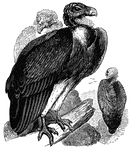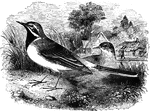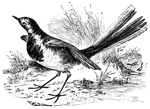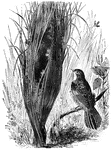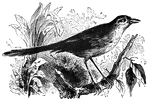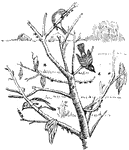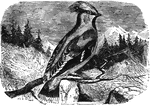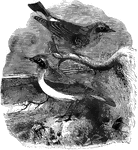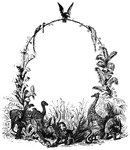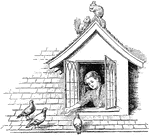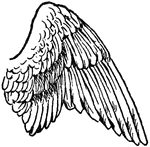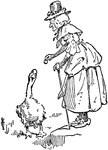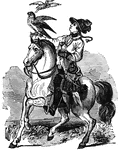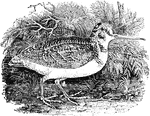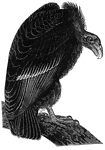
California Vulture
C. Californianus, a large species of vulture, found only on the western side of the Rocky Mountains,…
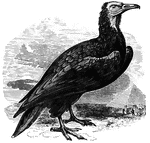
Egyptian Vulture
N. percnopterus, common to Africa, sometimes found in Southern Europe and in Asia. Males and…
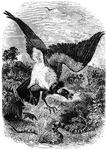
King Vulture
Genus sarcoramphus, a large vulture found in the tropical regions of the Americas, sometimes…
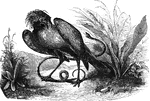
Secretary Vulture
G. serpentarius, known as the serpent vulture because it feeds on snakes. It has a distinctive…

Turkey Vulture
Vultures are carrion eaters. The head and neck are usually bare, and the bill and claws weaker than…

Vultures
Genus Vulture, posess keen eyesight and a sense of smell for locating carcasses. Vultures feed…

Wagtail
This wagtail is remarkable for the vibratory motion of their body while standing or walking, (Figuier,…

Wagtail
This wagtail is remarkable for the vibratory motion of their body while standing or walking, (Figuier,…

Wagtail
This wagtail is remarkable for the vibratory motion of their body while standing or walking, (Figuier,…

Wagtail
This wagtail is remarkable for the vibratory motion of their body while standing or walking, (Figuier,…
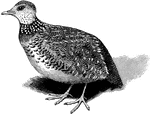
Plain Wanderer
Pedionomus torquatus differs in structure from Turnix by the presence of a small hind-toe. The lax upper…
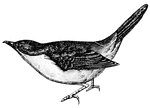
Warbler
Its song is loud, cheerful, and much diversified, night being generally selected for the display of…
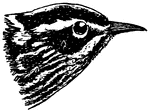
Black and White Warbler
The Black-and-white Warbler, Mniotilta varia, is a small New World warbler. It breeds in northern and…
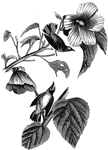
Blue-Winged Yellow Warbler
Found from Louisiana to New Jersey, the blue-winged yellow warbler migrates south to tropical parts…
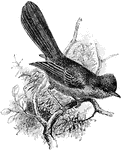
Dartford Warbler
The Dartford Warbler, Sylvia undata, is a typical warbler from the warmer parts of western Europe, and…
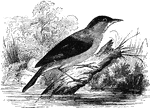
Reed Warbler
Nesting in the reeds near bodies of freshwater, the reed-warbler can be found in Middle and Southern…
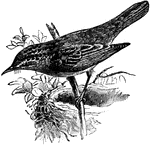
Sedge Warbler
The Sedge Warbler (Acrocephalus schoenobaenus) is a small passerine bird in the Sylviidae family.

Water-Hen
"The chief characteristic of the Water-en is a short and strong bill. They are lively, graceful and…
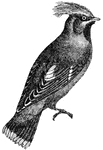
Waxwing
This bohemian waxwing has more plumage than the typical Cedar waxwing of the U.S. Waxwings have a red…
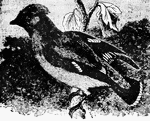
Waxwing
"The Waxwing is an insessorial bird belonging to the dentirostral section of the order. It derives its…

Nests of the Bengal weaver-bird
Nests of the Bengal weaver-bird, which adds a new one to the bottom of the previous season's every year.
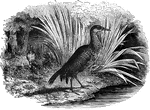
Weka
"Seventeen inches long; color brown; it flies badly, but runs with great swiftness; never takes to the…
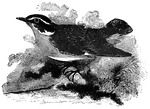
Whinchat
The whinchat is a migratory European bird, which subsists on a diet of worms, insects, small shell-mollusks,…
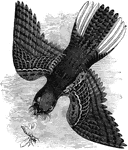
Whippoorwill
A whippoorwill chasing a winged insect. This bird derives its namesake from its distinctive call.
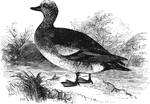
American Widgeon
The American widgeon (or baldpate) averages about nineteen inches in length. It is common in North America,…

Widowbird
The widowbird, also known as the whidahfinch. Although most specimens are about the size of a canary,…
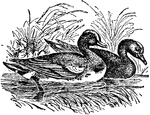
Wigeon
"Wigeon is one of the most popular birds with the American sportsman. Length about eighteen inches;…

Western Wood Pewee
The Western Wood-Pewee, Contopus sordidulus, is a small tyrant flycatcher. Adults are gray-olive on…
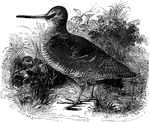
European Woodcock
The European woodcock averages about thirteen inches in length, and prefers to feed on earthworms. It…

Woodcocks (White and Isabelle-colored)
"They are shy, timid birds, concealing themselves by day in the depths of the mots retired woods."
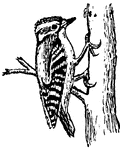
Woodpecker
The woodpeckers, piculets and wrynecks are a family, Picidae, of near-passerine birds . Members of this…

Downy Woodpecker
The woodpeckers are typical climbers, with two toes turned forward and two backward, (zygodactyl).
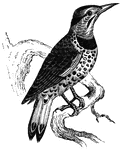
Golden-Winged Woodpecker
The golden-winged woodpecker is known for burrowing its own holes into live trees to use as a nest.
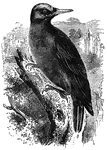
Great black Woodpecker
Chiefly making its habitat in Northern Europe, the great black woodpecker uses its long, sharp bill…
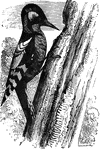
Great Spotted Woodpecker
The great spotted woodpecker measures an average of nine and a half inches long, and is found throughout…

Green Woodpecker
The green woodpecker is found throughout Europe, and uses its beak to make holes in tree trunks to roost…
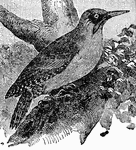
Green Woodpecker
"Woodpecker is the popular name of the old Linnæan genus Picus, now greatly divided. Woodpeckers…
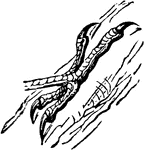
Foot of a Green Woodpecker
The foot of a Green Woodpecker, a bird belonging to the Scansores order. Scansores is an order of birds,…
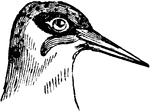
Head of a Green Woodpecker
The head of a Green Woodpecker, a bird belonging to the Scansores order. Scansores is an order of birds,…
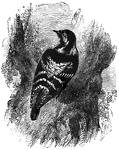
Lesser Spotted Woodpecker
Common in England and distributed across Europe, the lesser spotted woodpecker measures about five and…

